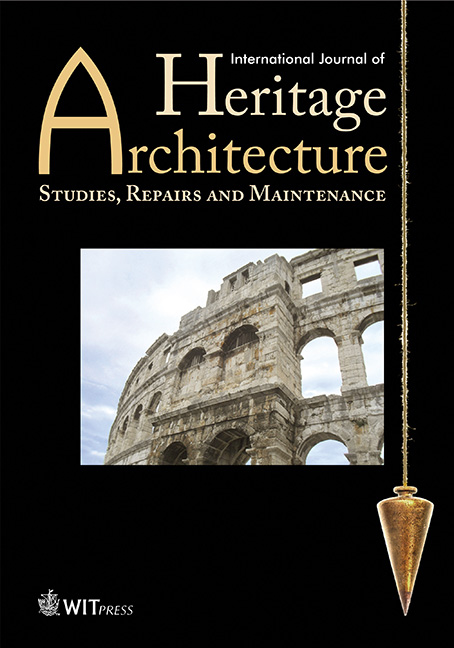The legacy of Aleppine Ottoman houses
Price
Free (open access)
Volume
Volume 1 (2017), Issue 3
Pages
12
Page Range
388 - 400
Paper DOI
10.2495/HA-V1-N3-388-400
Copyright
WIT Press
Author(s)
RAMI ALAFANDI & ASIAH ABDUL RAHIM
Abstract
The objective of this article is to show the importance of the architectural and interior design of Aleppine houses. Aleppo is the second largest city in Syria (after the capital Damascus) and is also its commercial capital. Aleppo has a long history, extending from the third millennium B.C. to the Islamic era. Islamic rulers made Aleppo great by re-building its walls, gates, towers and citadel. The Muslims also built mosques, schools, houses, inns, markets, hospitals, bathrooms and public facilities. Consequently, Aleppo flourished and became a very important station on the Silk Road: the third largest city in the Ottoman Empire after Istanbul and Cairo. Aleppo was part of the Ottoman Empire from 1516 to 1918. As part of this empire, local Aleppine architects and craftsmen combined their techniques and cultural heritage with Ottoman architecture and design. Due to growth in population, the Ottomans expanded the city, provided facilities and established neighbourhoods outside the walls. These neighbourhoods outside the walls were mostly for the affluent and contained the greatest treasure of decoration and materials. This research employs a historical and descriptive approach to explore the history, design and decoration of the traditional houses during the Ottoman period. In 1986, UNESCO added Old Aleppo City to the World Heritage List. Since 2012 much of Syria’s architectural heritage has been destroyed due to internal war. In Aleppo, the losses in both ancient and modern parts of the city have been tremen- dous. Some traditional houses have been damaged. This article will highlight some recommendations to protect and restore the traditional houses in Aleppo for future use.
Keywords
Aleppine houses, Aleppo City, Aleppo Heritage, Ottoman architecture.




